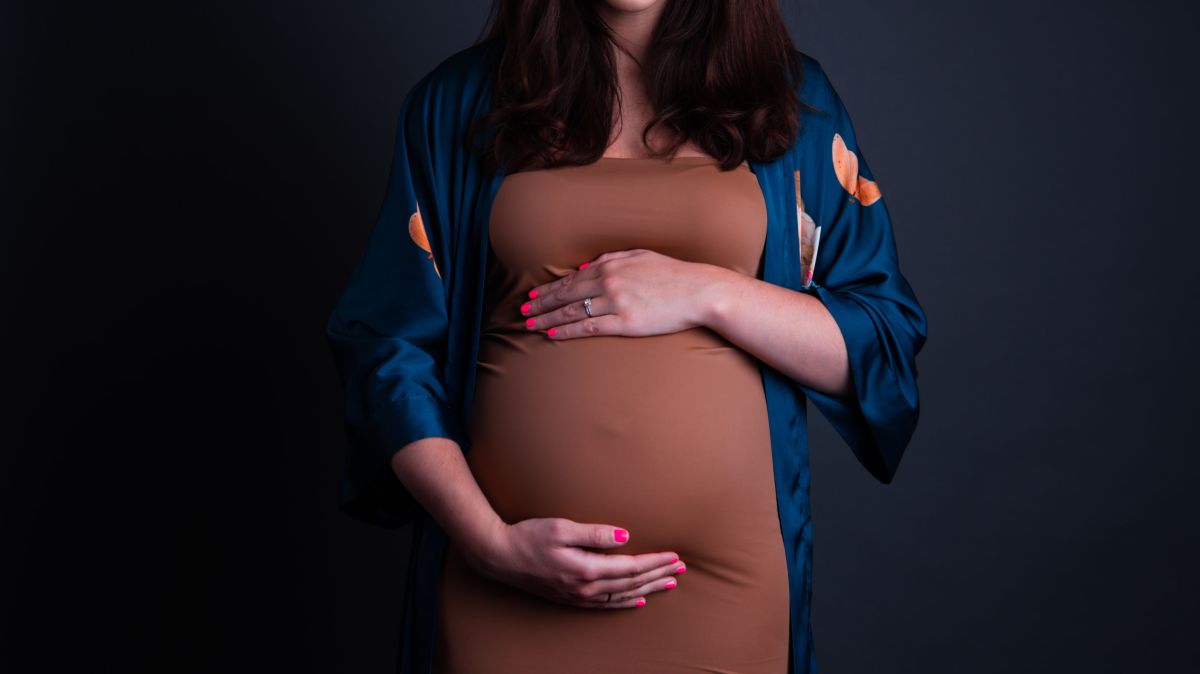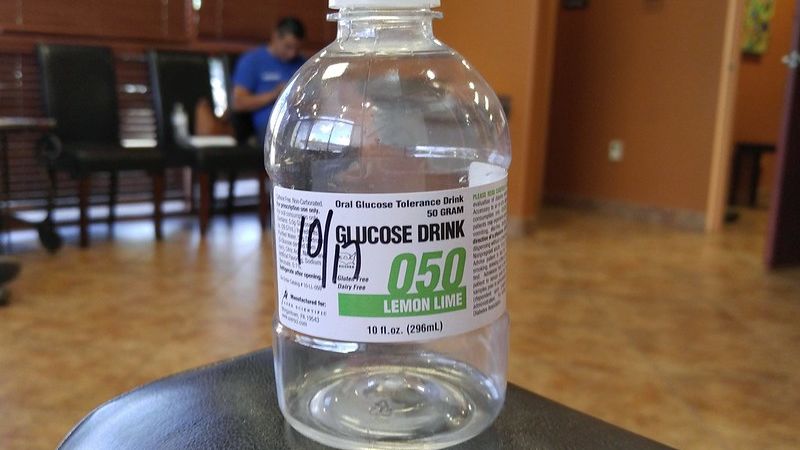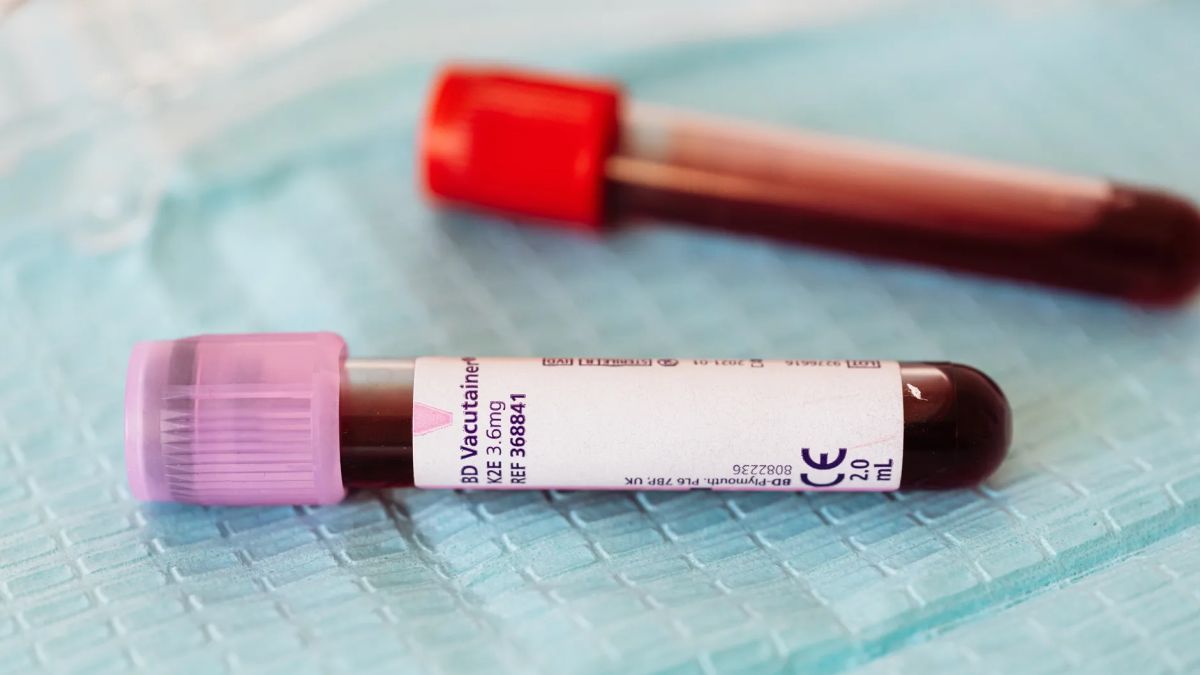Glucose Screening

International disagreement regarding the most optimal method to identify and diagnose women with gestational diabetes mellitus (GDM) still exists almost six decades after GDM screening tests were first recommended for all pregnant women.
There are currently two major methods of screening, with one mostly used in the United States (U.S.), and the other mostly in European countries.
The first method (U.S.) involves a two step approach in which women take a 1-hour glucose challenge test (50 gram glucose drink) between 24 and 28 weeks of pregnancy; if results are abnormal, this test is followed up with a 3-hour (100 g) glucose tolerance test. If results are abnormal, women are diagnosed with GDM.
The second method (Europe) involves a possible HbA1c blood test at the first prenatal appointment and a one step 2-hour (75 g) glucose tolerance test between 24 and 28 weeks of pregnancy.
There are benefits to both methods, and women have options, especially if drinking 50 to 100 grams of sugar gives certain women unwanted side effects (nausea, vomiting, shaking). If women are concerned about the screening test, which is important to prevent GDM-related complications, they need to talk to their health care provider (HCP) about their options.
Women should continue reading to learn why and when the glucose screening/diagnostic tests are recommended.
Background
A glucose screening test is a routine test during pregnancy – usually completed between 24 and 28 weeks – that checks a woman's blood glucose (sugar) levels to determine her risk, or diagnosis of, gestational diabetes mellitus (GDM).
A glucose screening test for all pregnant women, rather than only high-risk women, was first recommended in 1960 after it was determined this could prevent possible additional adverse outcomes as a result of high blood sugar.
The screening recommendation at that time included a 3-hour oral 100 gram (g) glucose test; however, 60 years later, there is still much debate and controversy regarding the most optimal way to identify women with GDM.

GDM Primer
See Gestational Diabetes for more detailed information.
GMD is defined as any degree of glucose intolerance with onset or first recognition during pregnancy. Many women with GDM have no symptoms or history of glucose intolerance, which has led to the recommended universal screening of all pregnant women. GDM is estimated to occur in up to 10% of all pregnancies.
Hormones during pregnancy cause increasing insulin resistance throughout pregnancy – this is considered normal. The body needs to produce more and more insulin as pregnancy progresses. While most pregnant women’s bodies adjust to this resistance by producing the extra insulin without a problem, others do not, and therefore develop GDM. Due to this lack of extra insulin, the body’s cells cannot use all the glucose, and it builds up in the blood, leading to hyperglycemia (high blood sugar).
Glucose screening tests measure the glucose levels in a woman’s blood; if the blood sugar levels are considered too high, this is a sign the body is not absorbing glucose/producing the necessary insulin.
When and How
There are three main glucose screening tests; they can be distinguished by length of time it takes to complete the test. The most common screening test in the United States is a “two step” approach with a 1-hour test first (oral glucose challenge test), followed by a 3-hour test (oral glucose tolerance test) if necessary. In Europe, the “one-step” 2-hour approach is most popular.
Women drink a solution of sugar and water within about 5 minutes; resulting blood work (after a certain amount of time – one, two, or three hours) will inform HCPs how the woman's body is processing/handling the sugar.

The most common stage of pregnancy for glucose screening is between 24 and 28 weeks. The insulin resistance that occurs during pregnancy is not expected to affect most women until about 20 weeks of pregnancy; therefore, women are tested at 24 to 28 weeks, and not before. If women wait too long to take the screening test, there may not be enough time to prevent possible complications that occur as a result of GDM.
However, there are researchers who advocate for earlier screening (approximately 16 weeks), which could prevent even more complications in women who are affected by insulin resistance much earlier than 24 weeks. Additionally, some reporting indicates between 40% and 66% of gestational diabetes can be detected in early pregnancy.
Of note, an observational study published in November 2020 linked high-risk women's blood glucose levels in early pregnancy to neonatal complications specifically resulting from (undiagnosed) high blood sugar prior to pregnancy. The authors suggested that early glucose testing in high-risk women could be potentially used to predict the risk of birth defects.
Currently, most women will receive screening between 24 and 28 weeks. However, if women currently have type 2 diabetes, or have risk factors associated with GDM, they may be tested much earlier (at the recommendation of their HCP).
Risk factors may include:
Gestational diabetes in an earlier pregnancy
Family history of diabetes
Polycystic ovary syndrome
Some organizations do not believe all women need to be tested during pregnancy. The American Diabetes Association (ADA) and the United Kingdom (U.K.) National Institute for Health and Care Excellence believe risk-factor based screening is all that is necessary and that pregnant women without risk factors do not need to be routinely screened. However, advocates of universal screening indicate that risk-based screening could miss as many as half of all women with GDM.
Regardless, when screening does occur, there are two methods of testing currently in practice, with no universal agreement on which method may be most optimal.
The American College of Obstetricians and Gynecologists (ACOG), U.S. National Institutes of Health, and the U.S. Preventative Services Task Force recommend performing a 1-hour blood glucose challenge test (50 g of glucose) to screen for gestational diabetes in low-risk pregnant women between 24 and 28 weeks of pregnancy; abnormal results of the 1-hour test lead to the recommendation of a follow up 3-hour diagnostic test (100 g).
The World Health Organization, European Association for the Study of Diabetes, ADA, Endocrine Society, and the International Association of Diabetes Pregnancy Study Group recommend a single step screening method consisting of a 2-hour diagnostic test (75 g). The 2-hour test is also used most often in the U.K.
TWO Step 1-hour test
The first step of the TWO step process involves a pregnant woman providing a blood sample, drinking a 50 g glucose drink (dissolved in 250 to 300 milliliters (ml) of water) within about 5 minutes, then providing a second blood sample about one hour later to identify how the body responded to the glucose (related: Fear of Needles).
While fasting is not required for this test, and side effects are minimal, some women can feel slightly nauseous, weak, or shaky. It is often recommended women bring along a protein snack to eat after completion of the second blood draw.
If a woman’s blood sugar level is 140 or higher after the 1-hour blood draw – a return visit for the second step of the TWO step process is recommended (see below). This 3-hour diagnostic test is used to confirm abnormal findings, as a higher than normal reading after the first step does not always mean a woman has gestational diabetes.
Note: If a woman's blood sugar level was 190 or above after the 1-hour test, the woman will most likely be diagnosed with gestational diabetes regardless of the follow up test.
It is currently estimated that approximately 15-20% of screened pregnant women will require the 100 gram, 3-hour oral glucose tolerance test (but not all will be diagnosed with GDM).
This image contains triggers for: Blood, Needle
You control trigger warnings in your account settings.
TWO Step 3-hour test
Women asked to return for the 3-hour test need to follow all instructions exactly as provided by their HCP.
Although fasting is not required for the 1-hour test, it is normally required for the 3-hour follow up test. Women may have a scheduled appointment for first thing in the morning, and be asked to fast for the prior eight hours. Upon arrival, women will provide a blood sample prior to the glucose drink. For this test, a 100 g glucose beverage (about 240 mL) is required.
After drinking the beverage, the woman’s blood is taken every hour for three hours (four total blood draws). Women are advised not to eat anything during this time frame. Diagnosis of GDM is usually made if at least two of the four readings are considered higher than:
Fasting serum glucose of 95 mg/dl or 105 mg/dl (5.5/5.8 mmol/l)
1-hour serum glucose of 180 mg/dl or 190 mg/dl (10.0 / 10.6 mmol/l)
2-hour serum glucose of 155 mg/dl or 165mg/dl (8.6 / 9.2 mmol/l)
3-hour serum glucose of 140 mg/dl or 145 mg/dl (7.8 /8.0 mmol/l)
However, if one of the results is higher than normal, the woman may be asked by her HCP to take the test again in one month.
It is recommended that women bring a protein snack to eat after the completion of the last blood draw, as well as things to keep busy during the three hours required for the test.

ONE Step 2-hour test
A 2-hour, 75 g glucose beverage (dissolved in 250 to 300 ml of water) screening test works the same as the 3-hour screening test described above, but includes less g of glucose and less time (there is no prior 1-hour test).
After a fast of at least 8 hours, women provide a blood sample, drink the beverage, and then provide a blood draw after 1 hour, and a third draw after 2 hours; sometimes the test can be extended to 3 hours.
If results of this 2-hour test are abnormal, women are diagnosed with GDM.
GDM may be diagnosed if values equals or exceed:
Fasting serum glucose of 92 mg/dl (5.1mmol/l)
1-hour serum glucose of 180 mg/dl (10.0mmol/l)
2-hour serum glucose of 153 mg/dl (8.5mmol/l)
HbA1c
Prior to the ONE STEP 2-hour test, women may be offered a HbA1c (A1C) blood test at an initial appointment. This test shows a woman’s average blood sugar level for the past 1 to 3 months by determining the percentage of hemoglobin (red blood cells) coated with sugar. The higher the HbA1c, the higher the risk of developing diabetes. This test is theorized to potentially be accurate enough to replace oral glucose screening.
More research is necessary before this occurs – at least routinely – as there is still too much disagreement on the best methods for identifying at risk women, the most optimal screening methods, measuring results, and even at which point to diagnose women with GDM.
Action
Women should be aware of their medical history and risk factors for gestational diabetes early in pregnancy. They can discuss their potential risks and ask their HCP if they should take the screening test at 24 to 28 weeks or earlier. If women have any additional questions regarding the screening process, they should talk to their HCP.
It is not uncommon for women to be concerned about drinking the glucose solution so quickly (within 5 minutes). Some women do get nauseous. Women should bring food/water with them for after completion of the test. If women feel they may be nauseous during the one or three hour wait, they can read Distraction Techniques here.
Women still suffering from Nausea and Vomiting of Pregnancy when they need to take this screening should read Taking Medications/Vitamins with NVP, which includes tips for drinking the glucose solution while already nauseated.
It is possible, depending on the HCP, that some women may be able to use food (jelly beans, etc). If women are really concerned about the solution, they should talk to their HCP about their options.
Women should also consider sharing and submitting their experience below regarding glucose screening during pregnancy, especially for those who struggled with drinking the solution or who felt nauseous afterward.
Resources
Gestational Diabetes (American Diabetes Association)
Gestational Diabetes (American College of Obstetricians and Gynecologists)
Gestational Diabetes (National Institute of Diabetes and Digestive and Kidney Diseases)
Gestational Diabetes Leaflet (Royal College of Obstetricians and Gynaecologists)